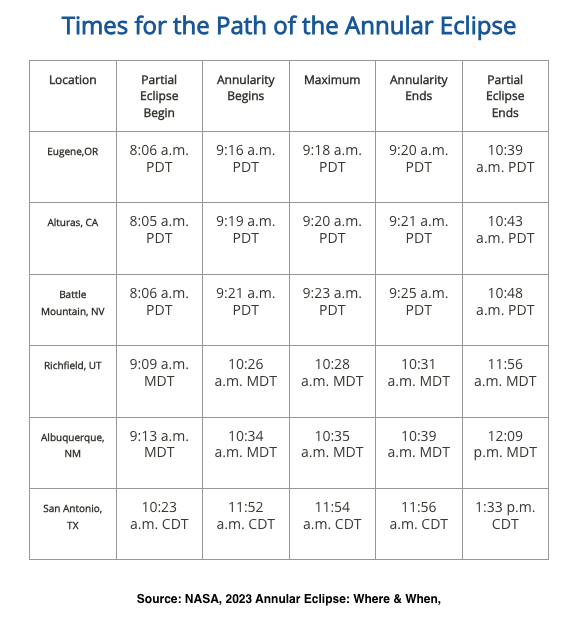News
Article
October 14, 2023 annular eclipse set to cast shadow over western US
Author(s):
Prevent Blindness emphasizes the importance of proper eye protection, as exposure to the sun during an eclipse can cause "eclipse blindness" or retinal burns, which can be temporary or permanent.
(Image Credit: AdobeStock)

An annular eclipse is set to cast a shadow over the Western part of the United States on October 14, 2023, and Prevent Blindness is advocating for safe viewing of the event.
Since the moon will not cover the sun, a “ring of fire” will be visible in the sky, but looking directly at it could impact your eyes. According to Prevent Blindness exposing your eyes to the sun without proper eye protection during a solar eclipse can cause “eclipse blindness” or retinal burns, also known as solar retinopathy. The damage can be either temporary or permanent and happens with no pain and takes hours or days to realizer the damage has occurred.1
Symptoms of eye damage after looking at a solar eclipse without proper eye protection can include:1
- Loss of central vision (solar retinopathy)
- Distorted vision
- Altered color vision
Prevent Blindness stresses that it is never safe to look at a partial solar eclipse without proper safety equipment
Expert-approved solar eclipse glasses, pinhole projection, welder’s glass, and mylar filters are some of the ways Prevent Blindness suggests looking at the eclipse.
The organization also stresses avoiding using your smartphone to view the eclipse, as you can inadvertently look at the sun while lining up the camera and it could damage the camera as well.
When is the eclipse?

The eclipse will begin around 10:06 AM Pacific Daylight Time in Oregon, and the point of the maximum eclipse will occur at 11:19 AM Mountain Daylight Time in Wyoming. The eclipse will last for approximately three and a half hours and end around 1:30 PM Eastern Daylight Time in the Atlantic Ocean.
According to Great American Eclipse, from beginning to end the October 14 annular solar eclipse will last about 2 and a half hours in total. The Moon’s shadow will travel across the US from 7,000 mph to 1,700 mph. While the path of the annular eclipse stretches from Oregon to Texas, the partial eclipse will be viewable from most of the mainland US.2
Just a warmup
While the annular eclipse is set to hit the Western US, a total solar eclipse will cross the US on April 8, 2024. The duration of totality will be approximately 4 minutes and 27 seconds, which is almost double that of the eclipse of August 21, 2017.3 It will also be visible in 13 states in the US, including Texas, Arkansas, Indiana, Ohio, New York and more.
References:
- October 14, 2023 Great American Eclipse (Annular Solar Eclipse). Prevent Blindness. Accessed October 12, 2023. https://preventblindness.org/solar-eclipses/october-14-2023-great-american-eclipse-annular-solar-eclipse/
- Annular solar eclipse of October 14, 2023. Great American eclipse. Accessed October 12, 2023. https://www.greatamericaneclipse.com/october-14-2023
- Total solar eclipse of April 8, 2024 over Mexico, the USA, and Canada. Great American eclipse. Accessed October 12, 2023. https://www.greatamericaneclipse.com/april-8-2024
Newsletter
Don’t miss out—get Ophthalmology Times updates on the latest clinical advancements and expert interviews, straight to your inbox.





